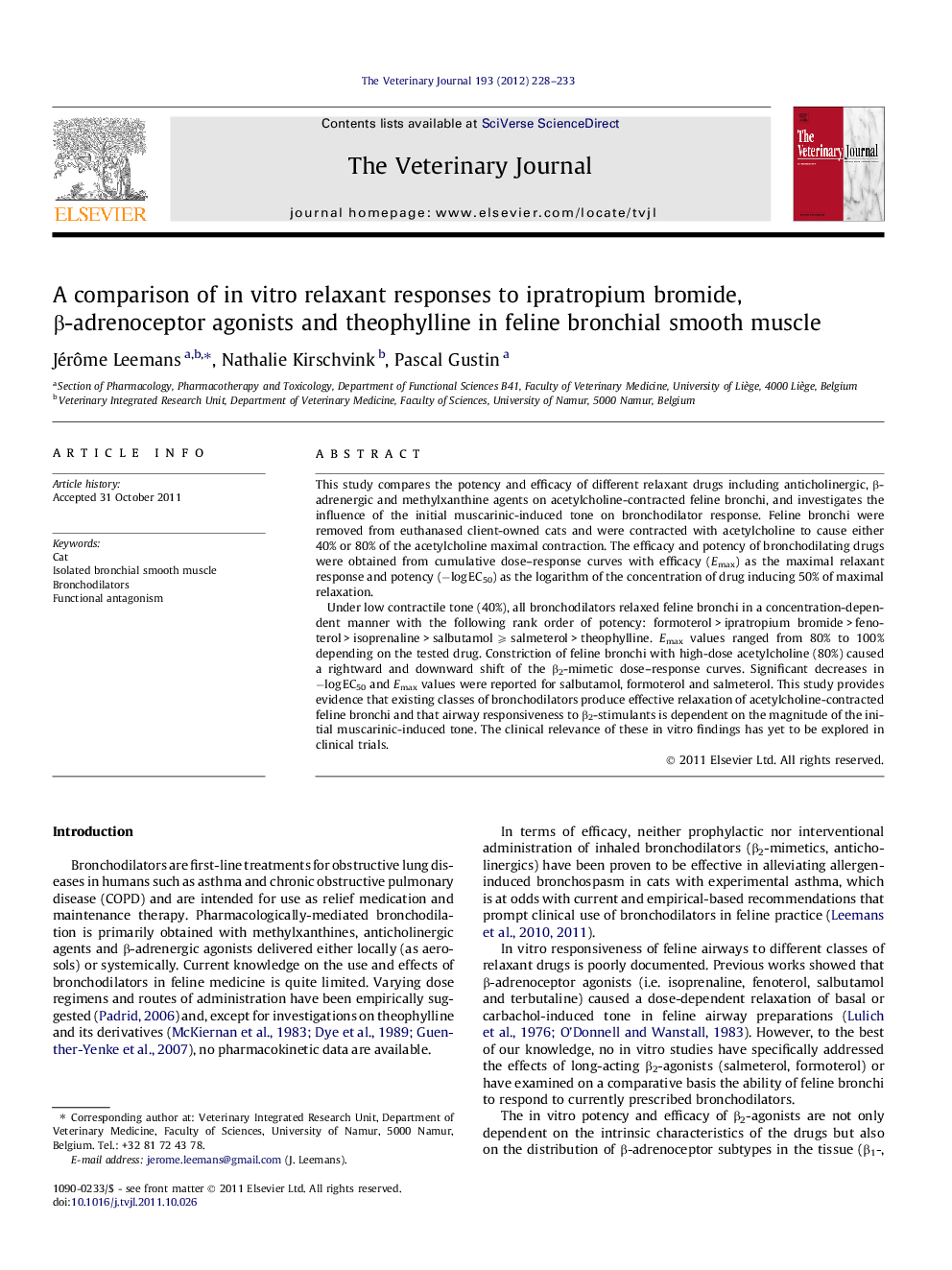| Article ID | Journal | Published Year | Pages | File Type |
|---|---|---|---|---|
| 5798933 | The Veterinary Journal | 2012 | 6 Pages |
This study compares the potency and efficacy of different relaxant drugs including anticholinergic, β-adrenergic and methylxanthine agents on acetylcholine-contracted feline bronchi, and investigates the influence of the initial muscarinic-induced tone on bronchodilator response. Feline bronchi were removed from euthanased client-owned cats and were contracted with acetylcholine to cause either 40% or 80% of the acetylcholine maximal contraction. The efficacy and potency of bronchodilating drugs were obtained from cumulative dose-response curves with efficacy (Emax) as the maximal relaxant response and potency (âlog EC50) as the logarithm of the concentration of drug inducing 50% of maximal relaxation.Under low contractile tone (40%), all bronchodilators relaxed feline bronchi in a concentration-dependent manner with the following rank order of potency: formoterol > ipratropium bromide > fenoterol > isoprenaline > salbutamol ⩾ salmeterol > theophylline. Emax values ranged from 80% to 100% depending on the tested drug. Constriction of feline bronchi with high-dose acetylcholine (80%) caused a rightward and downward shift of the β2-mimetic dose-response curves. Significant decreases in âlog EC50 and Emax values were reported for salbutamol, formoterol and salmeterol. This study provides evidence that existing classes of bronchodilators produce effective relaxation of acetylcholine-contracted feline bronchi and that airway responsiveness to β2-stimulants is dependent on the magnitude of the initial muscarinic-induced tone. The clinical relevance of these in vitro findings has yet to be explored in clinical trials.
